Geography
We are Geographers
Intent
Our Geography curriculum aims to create global citizens, who can think both critically and creatively, to solve problems of sustainability and the future of the planet. Through the teaching of geography, we will inspire children's curiosity to discover more about the world. Our children begin by interpreting their own part of the world first before transporting them to the wider one. Within this, they will learn about the location of the world's continents, countries, cities, seas and oceans. The geography classroom is the world's largest: it encompasses the whole Earth with its power to create immense beauty and terrible danger, as well as the wonderful diversity of its inhabitants. Children will develop the skills of interpreting a range of sources of geographical information, including maps, diagrams, globes and aerial photographs. Alongside this, the children will understand how the human and physical features of a place shapes it location and can change over time. Alongside everything we do, we continually embed our values of: kindness, dignity and endurance into the teaching of geography.
What is the point in being a Geographer?
A high-quality geography education should inspire in pupils a curiosity and fascination about the world and its people that will remain with them for the rest of their lives. Teaching should equip pupils with knowledge about diverse places, people, resources and natural and human environments, together with a deep understanding of the Earth’s key physical and human processes. As pupils progress, their growing knowledge about the world should help them to deepen their understanding of the interaction between physical
and human processes, and of the formation and use of landscapes and environments. Geographical knowledge, understanding and skills provide the frameworks and approaches that explain how the Earth’s features at different scales are shaped, interconnected and change over time. Alongside everything we do, we continually embed our values of: kindness, dignity and endurance into the teaching of geography.
The aims of being a Geographer are:
- develop contextual knowledge of the location of globally significant places – both terrestrial and marine – including their defining physical and human characteristics and how these provide a geographical context for understanding the actions of processes
- understand the processes that give rise to key physical and human geographical features of the world, how these are interdependent and how they bring about spatial variation and change over time
- are competent in the geographical skills needed to:
- collect, analyse and communicate with a range of data gathered through experiences of fieldwork that deepen their understanding of geographical processes
- interpret a range of sources of geographical information, including maps, diagrams, globes, aerial photographs and Geographical Information Systems (GIS)
- communicate geographical information in a variety of ways, including through maps, numerical and quantitative skills and writing at length.
Implementation
Where does it come from?
Being a Geographer is integrated into our curriculum through Curious-city. An enquiry-led, local learning approach to the National Curriculum 2014. This approach recognises that the cognitive maturity of learners affects what and how they learn. It also encourages teachers to think of how they encourage learners to 'Be a Geographer' instead of simply teaching them Geography.
Within a Curious-city curriculum, there is no ‘skills or knowledge’ debate. It is seamless blend of both, and through every enquiry, learners are challenged to work independently to prove their understanding of Being a Geographer.
What does being a lead Geographer entail?
- Provide encouragement and ideas to staff across the school
- Monitor content and enquiries and be mindful of coverage and skill acquisition
- Collect and evaluate different voices with regard to Being a Geographer
- Ensure enquiry planning and enquiry books are sufficient to effectively represent Being a Geographer.
What is ‘covered’?
Essentially, a Curious-city curriculum uses the National Curriculum 2014 areas as a basic foundation of entitlement. However Curious-city is much more than that. It is localised, real-life and challenges learners to apply their learning in unique ways without the support of adults to prove what they have learnt. Local companies, charities, organisations, individuals and objects are used as foci to enhance and instil a sense of curiosity, pride and stewardship.
Impact
Every term, the lead Geographer reviews children's enquiry books and displays of learning. This helps to not only ensure coverage and ‘matching up’ progress throughout a year group in line with the whole school curriculum map, but also an opportunity to collect different voices.
Every two terms, staff meet as a team to discuss and share what they are seeing and hearing within their subject, and as working as a team, help to review the school’s curriculum and contribute to the development plan.
As there is no requirement to formally report attainment of Geography, being a Geographer is assessed through monitoring how a child responds to enquiries and whether they show a particular enthusiasm and disposition towards it, or, if they constantly needed support in order to access it. This information is recorded onto the enquiry sheets which are kept and used for report writing towards the end of the year.
